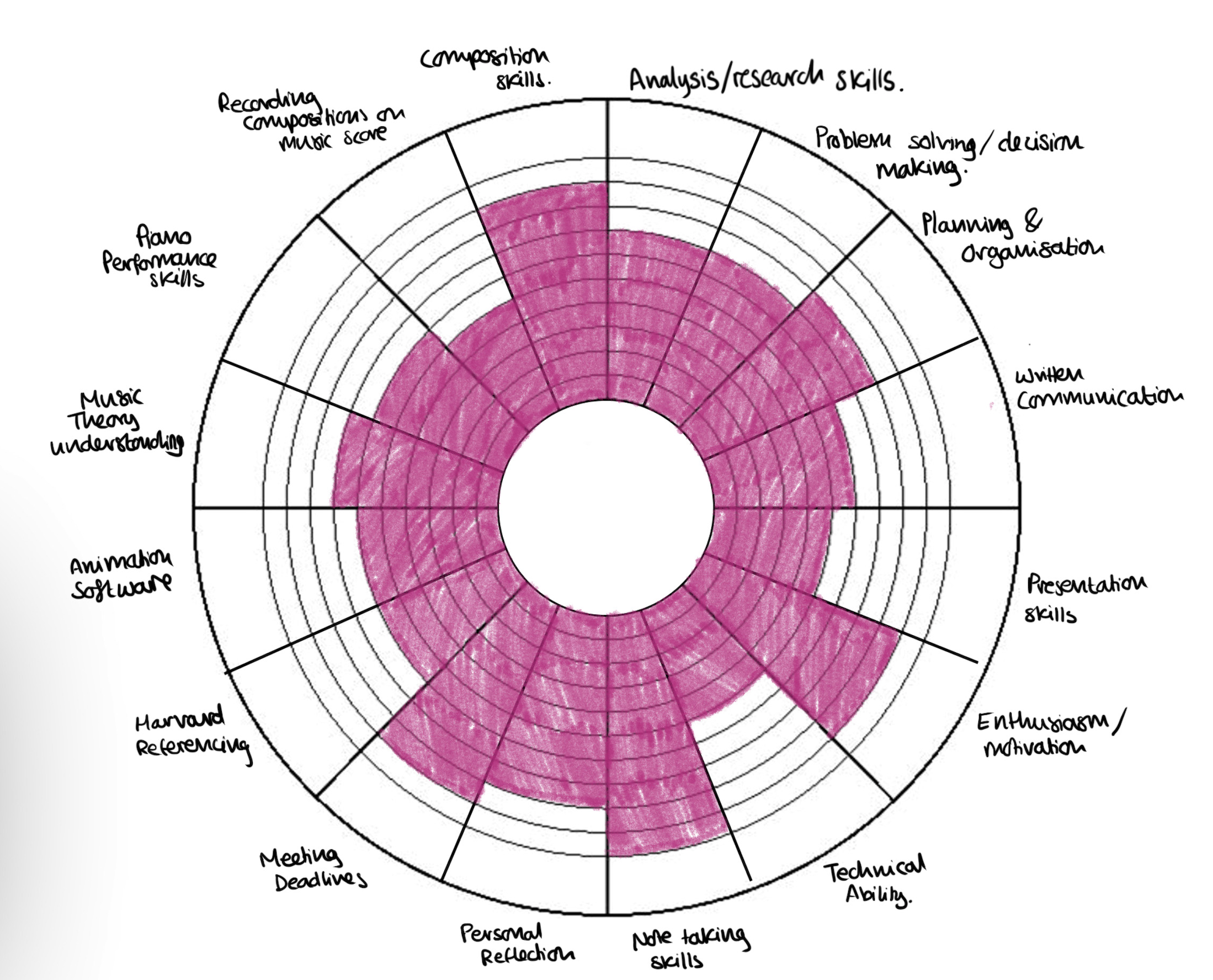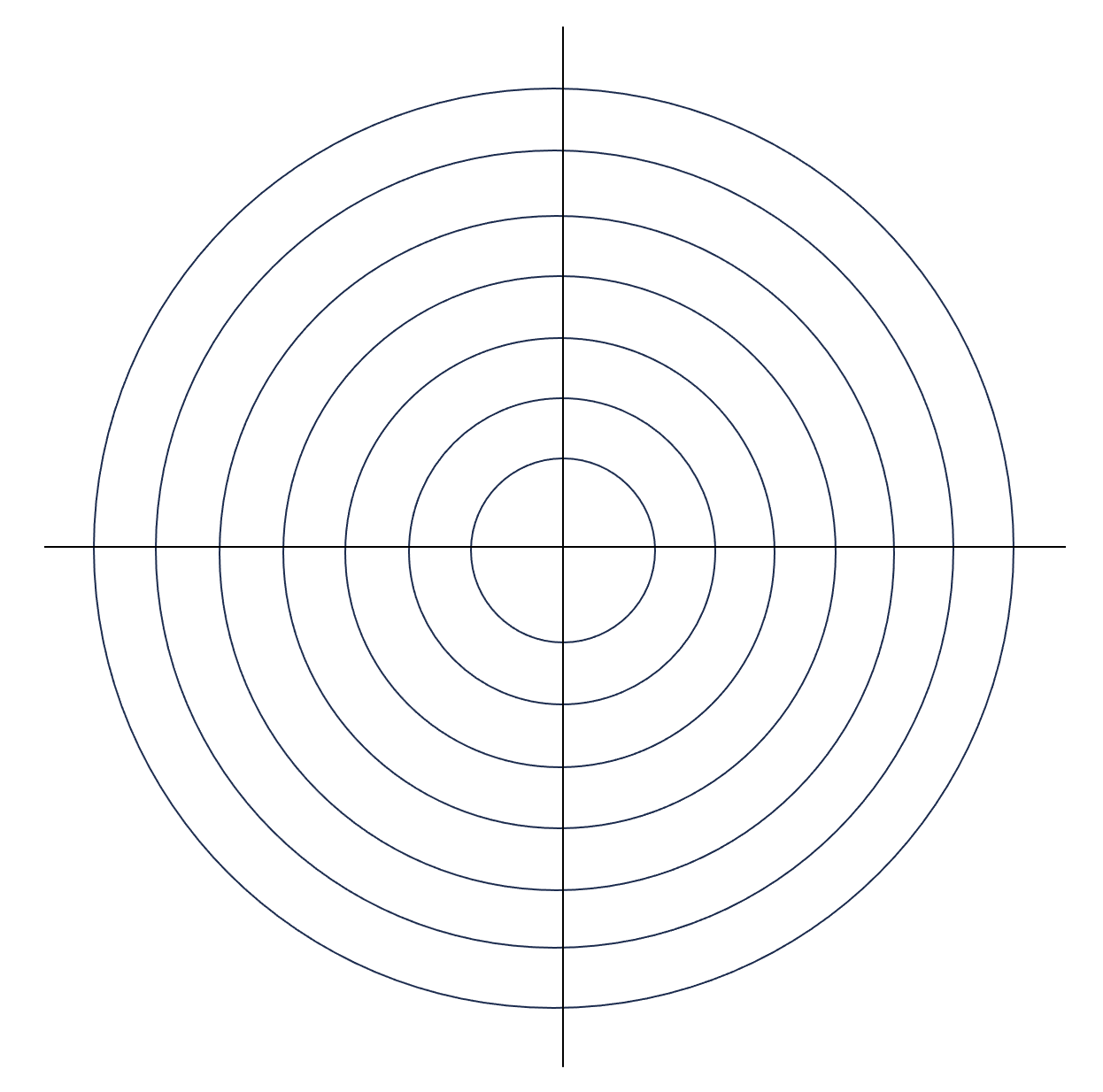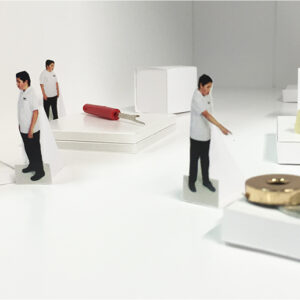Using Circle Diagrams to Celebrate Progression
By Paula Briggs

In the recording “Thinking About Curriculum Content & Progression in Primary Art” we discuss the use of Circle Diagrams as a gentle, learner centred way to think about assessment.
The circle diagram above is a sample used in the Extended Project Qualification (EPQ) for Year 12. In this instance the circle diagram enables the learner to think about the areas/skills/traits they would like to progress, placing them around the periphery of the circle. Each week or month as these skills are developed, through tasks, the learner can colour outwards as a pictorial representation of their growth.
AccessArt would like to invite teachers of Primary-aged children to explore the use of this method. The “Thinking About Curriculum Content & Progression in Primary Art” describes the range of skills and traits which we think it is important to develop. By creating a simple circle diagram with your chosen skills/traits, children can become aware of their own sense of development over time.
There are many ways of succeeding in art – for some children looking at and talking about art will be their skill, for other children drawing skills will be their strength, for others making. We don’t want or need to make sure all children succeed equally in all areas – of course children will progress all skills, but the circle diagram enables everyone to celebrate each child’s particular strengths without pitting them against another child or a fictitious standard. The aim is not to see the whole circle coloured in, but instead to use the diagrams to recognise where strengths (and perhaps areas to be developed) exist.
Remember:
-
Keep it light and celebratory! There is no need for heavy handed assessment – creativity is a fragile thing and it can be easily damaged.
-
Think holistically! Learning takes place through art, as well as about art, and the development of the pupil as a whole person is important. Never rely on measurement of certain skills (such as technical skills) above all other skills. Watch the video here.



Suzanne C
January 28, 2025 @ 11:05 am
Hi
What would you put on the circle for Primary schools. The example is secondary?
thanks
Suzanne
Paula
February 4, 2025 @ 11:19 am
Hi Suzanne, the idea behind using circle diagrams for assessment is that they encourage pupils and teachers to think more holistically about what is being learnt / experienced through a process or project, so when you decide what to put round the edge (it will vary for each thing you are monitoring) make sure you cover not just technical skills like an appreciation of using colour or mark making, but also more holistic skills, traits or behaviours like growing awareness of risk taking, or willingness to explore. For young children keep the number of sections / labels to a small number – maybe three or four – and keep them broad. For older children you can add more sections / labels. Take the words you use for each circle diagram from the I can statements on each pathway (or add your own). Choose the ones which you think genuinely represent progress for your pup[ils – building success into the process.
Suzanne
May 6, 2025 @ 8:10 pm
Thank you. Really helpful. I will give it a go!